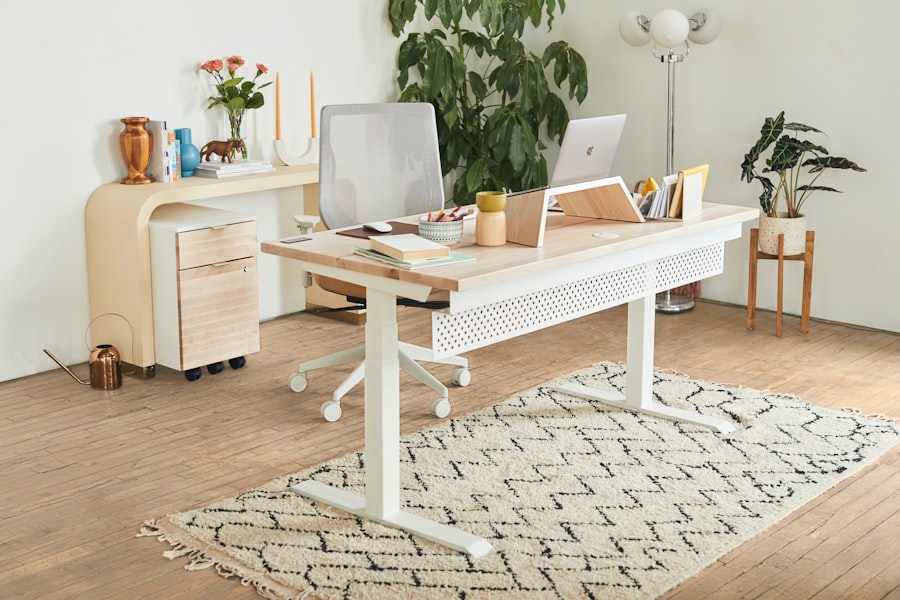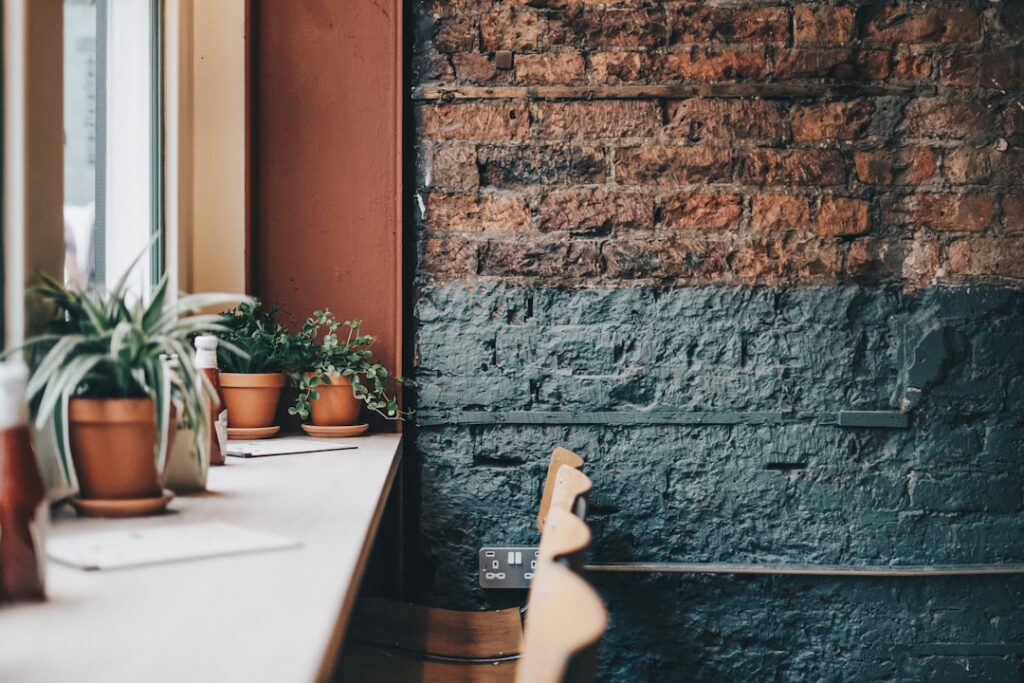In today’s fast-paced work environment, the aesthetic and functional aspects of office furniture play a crucial role in shaping productivity and employee satisfaction. Stylish office furniture is not merely about aesthetics; it encompasses a blend of design, comfort, and practicality that can significantly influence the overall atmosphere of a workspace. As businesses evolve, so do their needs, leading to a demand for furniture that reflects modern trends while also catering to the diverse requirements of employees.
The right office furniture can create an inviting atmosphere that fosters creativity and collaboration, making it essential for companies to invest in pieces that are both visually appealing and functional. Moreover, the importance of stylish office furniture extends beyond mere appearance. It can enhance the brand image of a company, making a strong first impression on clients and visitors.
A well-furnished office space communicates professionalism and attention to detail, which can be pivotal in establishing trust and credibility. As remote work becomes more prevalent, the design of home offices has also gained prominence, prompting individuals to seek out stylish yet functional furniture that can transform their work-from-home experience. In this article, we will explore various aspects of office furniture, from selecting the right desk to incorporating decorative accents, ensuring that your workspace is not only stylish but also conducive to productivity.
Key Takeaways
- Stylish office furniture can enhance the overall look and feel of a workspace, creating a professional and inviting environment for employees and clients.
- When choosing the right desk for your workspace, consider factors such as size, material, and functionality to ensure it meets your specific needs and complements the overall design of the office.
- Ergonomic chairs are essential for promoting comfort and productivity in the workplace, so it’s important to invest in high-quality chairs that provide proper support for long hours of sitting.
- Filing cabinets and bookshelves are essential storage solutions for keeping the office organized and clutter-free, while also adding a touch of style with their design and finish.
- Decorative accents and accessories such as artwork, plants, and desk organizers can add personality and style to the office, making it a more enjoyable and inspiring place to work.
Choosing the Right Desk for Your Workspace
Selecting the right desk is one of the most critical decisions when designing an office space. The desk serves as the central hub for work activities, and its design can significantly impact both functionality and aesthetics. When choosing a desk, it is essential to consider factors such as size, shape, and material.
For instance, a large executive desk may convey authority and professionalism, while a minimalist writing desk can create a clean and uncluttered look. Additionally, the desk should complement the overall design theme of the office, whether it leans towards modern, traditional, or eclectic styles. The right desk not only enhances the visual appeal of the workspace but also provides adequate space for essential tools and equipment.
Functionality is equally important when selecting a desk. Consider your work habits and the type of tasks you perform daily. If you often collaborate with colleagues or require ample space for documents and technology, a larger desk with additional features like built-in storage or cable management may be necessary.
On the other hand, if your work involves minimal paperwork and you prefer a more streamlined approach, a compact desk may suffice. Furthermore, adjustable desks that allow for height modifications are gaining popularity as they cater to various working styles and promote better posture. Ultimately, the right desk should strike a balance between style and practicality, ensuring that it meets your specific needs while enhancing the overall aesthetic of your workspace.
Ergonomic Chairs for Comfort and Productivity

The significance of ergonomic chairs in an office setting cannot be overstated. These chairs are designed with the human body in mind, promoting proper posture and reducing the risk of discomfort or injury during long hours of sitting. An ergonomic chair typically features adjustable components such as seat height, backrest angle, and armrest position, allowing users to customize their seating experience according to their individual preferences.
This adaptability is crucial in fostering a comfortable work environment where employees can focus on their tasks without being distracted by physical discomfort. Investing in ergonomic chairs not only enhances employee well-being but also boosts productivity. Research has shown that comfortable seating can lead to increased concentration and efficiency, as employees are less likely to experience fatigue or discomfort that could hinder their performance.
Moreover, ergonomic chairs often come with additional features such as lumbar support and breathable materials that further enhance comfort levels. By prioritizing ergonomic seating solutions, companies demonstrate their commitment to employee health and satisfaction, which can lead to higher morale and lower turnover rates. In an era where workplace wellness is increasingly recognized as a vital component of organizational success, ergonomic chairs are an essential investment for any modern office.
Storage Solutions: Filing Cabinets and Bookshelves
Effective storage solutions are fundamental to maintaining an organized and efficient office environment. Filing cabinets and bookshelves serve as essential components in managing documents, supplies, and resources while contributing to the overall aesthetic of the workspace. Filing cabinets come in various styles and sizes, from traditional metal designs to contemporary wooden options that can blend seamlessly with other furniture pieces.
Choosing the right filing cabinet involves considering both functionality and design; it should provide ample storage space while complementing the office’s decor. Bookshelves also play a significant role in office organization and style. They not only provide storage for books and reference materials but can also serve as decorative elements that enhance the visual appeal of the workspace.
Open shelving allows for creative displays of personal items or company awards, adding character to the office environment. When selecting storage solutions, it is essential to consider accessibility; items should be easy to reach while maintaining a tidy appearance. By incorporating well-designed filing cabinets and bookshelves into your office layout, you can create a harmonious balance between organization and style that promotes productivity and creativity.
Adding Style with Decorative Accents and Accessories
Incorporating decorative accents and accessories into an office space can significantly elevate its overall aesthetic appeal. These elements allow for personal expression while creating an inviting atmosphere that encourages creativity and collaboration among employees. Decorative items such as artwork, plants, and unique lighting fixtures can transform a sterile workspace into a vibrant environment that reflects the company’s culture and values.
For instance, adding colorful artwork or motivational quotes on the walls can inspire employees and create a positive ambiance. Moreover, accessories such as stylish desk organizers or decorative trays can enhance functionality while contributing to the overall design theme of the office. Plants are particularly effective in adding life to a workspace; they not only improve air quality but also create a calming effect that can reduce stress levels among employees.
When selecting decorative accents, it is essential to strike a balance between style and practicality; items should enhance the workspace without causing clutter or distraction. By thoughtfully incorporating decorative elements into your office design, you can create an inspiring environment that fosters productivity and well-being.
Collaborative Workspaces: Meeting Tables and Seating

Designing Collaborative Spaces for Success
As workplaces increasingly adopt collaborative approaches, the design of these spaces has become crucial. Meeting tables and seating arrangements play a vital role in facilitating effective communication and brainstorming sessions among team members.
Choosing the Right Meeting Tables
When selecting meeting tables, several factors should be considered, including size, shape, and material. Round tables promote discussion and inclusivity, making them ideal for collaborative brainstorming sessions. In contrast, rectangular tables may be more suitable for formal presentations or larger groups. The choice of material also impacts both aesthetics and functionality. For instance, wooden tables exude warmth and professionalism, while glass tables offer a modern touch.
Seating Options for Collaborative Spaces
Seating options for collaborative spaces should prioritize comfort and flexibility. Modular seating arrangements allow for easy reconfiguration based on group size or activity type, promoting adaptability in dynamic work environments. This flexibility enables teams to quickly adjust their setup to suit different tasks and activities.
Fostering a Culture of Teamwork and Innovation
By incorporating lounge-style seating, organizations can create informal meeting areas that encourage creativity and open dialogue among team members. By designing collaborative spaces with thoughtful consideration of meeting tables and seating arrangements, organizations can foster a culture of teamwork and innovation that drives success.
Standing Desks and Other Health-Conscious Options
The growing awareness of health issues related to prolonged sitting has led to an increased interest in standing desks and other health-conscious office furniture options. Standing desks allow users to alternate between sitting and standing throughout the day, promoting better posture and reducing the risk of musculoskeletal disorders associated with sedentary behavior. Many standing desks are adjustable, enabling users to customize their height preferences easily.
This flexibility encourages movement during work hours, which can enhance energy levels and overall productivity. In addition to standing desks, other health-conscious options include sit-stand converters that can be placed on existing desks or treadmill desks that promote physical activity while working. Incorporating these options into an office environment demonstrates a commitment to employee well-being by providing alternatives that encourage movement throughout the day.
Furthermore, creating designated areas for stretching or quick exercises can further promote a culture of health within the workplace. By prioritizing health-conscious furniture choices, organizations can contribute to improved employee morale and productivity while reducing healthcare costs associated with sedentary lifestyles.
Budget-Friendly Office Furniture Options
While investing in stylish office furniture is essential for creating an appealing workspace, budget constraints often pose challenges for many businesses. Fortunately, there are numerous budget-friendly options available that do not compromise on quality or aesthetics. One approach is to explore second-hand or refurbished furniture; many companies offer high-quality pre-owned pieces at significantly reduced prices.
This option not only saves money but also promotes sustainability by reducing waste in landfills. Additionally, consider opting for modular furniture systems that allow for flexibility in design without breaking the bank. These systems often come with interchangeable components that can be easily reconfigured as needs change over time.
Furthermore, DIY projects can be an excellent way to create custom furniture solutions at a fraction of the cost; simple modifications or upcycling existing pieces can yield unique results tailored to your specific style preferences. By exploring these budget-friendly options, businesses can create stylish and functional office spaces without compromising their financial goals while still fostering an environment conducive to productivity and creativity.
If you’re looking to enhance your office environment, you might find the article on office furniture solutions particularly insightful. It explores various furniture options that can not only improve the aesthetics of your workspace but also boost productivity and comfort. From ergonomic chairs to modular desks, the article provides valuable tips on choosing the right furniture to meet the needs of your office, ensuring both functionality and style.
FAQs
What are the different types of office furniture?
Office furniture includes desks, chairs, filing cabinets, bookcases, conference tables, reception desks, and storage units.
What materials are commonly used in office furniture?
Common materials used in office furniture include wood, metal, glass, and plastic. Some furniture may also incorporate upholstery and fabric.
What are the ergonomic considerations for office furniture?
Ergonomic office furniture is designed to provide comfort and support for the user, promoting good posture and reducing the risk of musculoskeletal issues. This includes adjustable chairs, standing desks, and keyboard trays.
How can office furniture contribute to a productive work environment?
Well-designed office furniture can contribute to a productive work environment by providing comfort, organization, and functionality. It can also contribute to the overall aesthetic and atmosphere of the office space.
What are some popular trends in office furniture design?
Some popular trends in office furniture design include modular and flexible furniture systems, sustainable and eco-friendly materials, and the incorporation of technology into furniture pieces.
How can businesses choose the right office furniture for their needs?
Businesses should consider factors such as the size and layout of their office space, the specific needs of their employees, and their budget when choosing office furniture. It’s also important to consider the durability and quality of the furniture.


